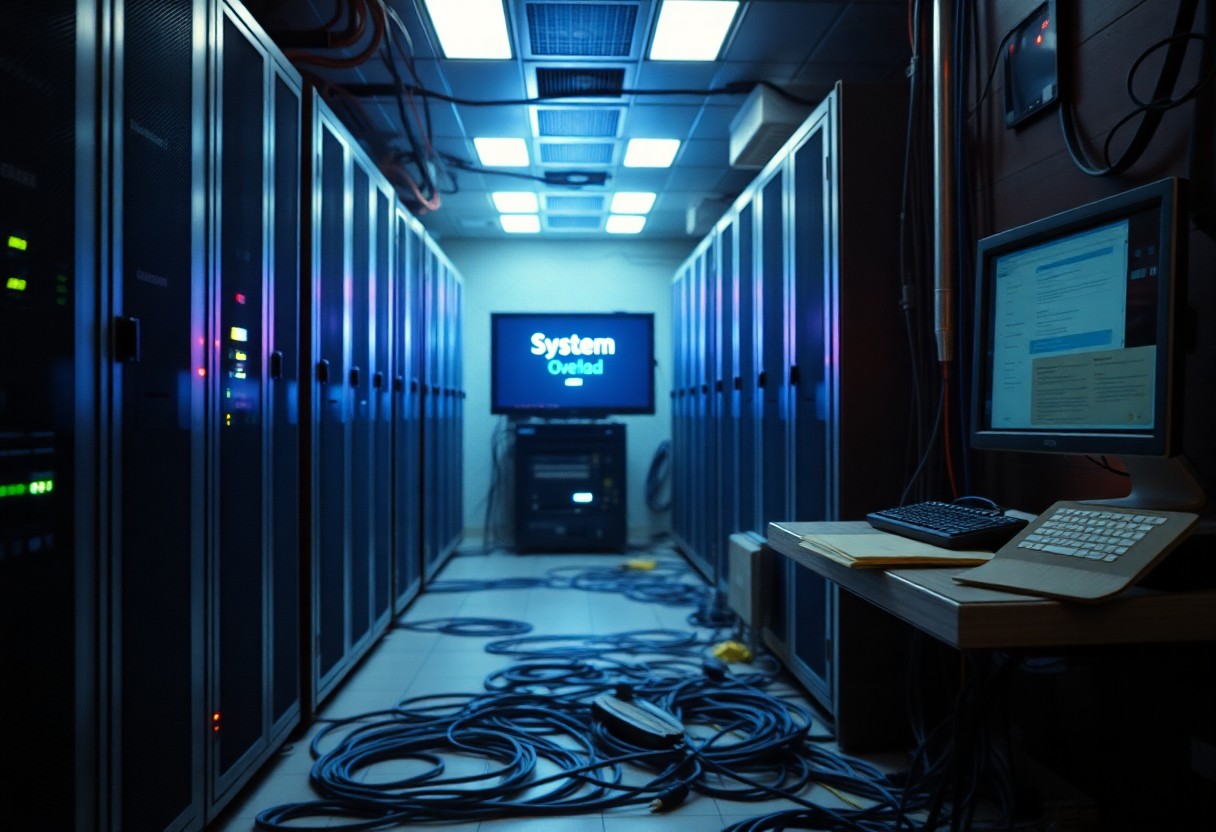What Is Endpoint Protection And Why It’s Critical For Cyber Security
You need to understand that endpoint protection is a vital component of your cyber security strategy. This technology...

Upgrade your IT infrastructure before outdated systems hinder your business growth. In today’s fast-paced digital landscape, inefficient technology can lead to significant security risks, decreased productivity, and lost revenue. Recognizing the signs that it’s time for an upgrade is necessary for maintaining a competitive edge. From persistent downtime to slow performance, these indicators can help you identify opportunities for improvement, ensuring that your operations run smoothly and securely.


Experiencing performance bottlenecks in your IT infrastructure can significantly hinder productivity and efficiency. If your systems are struggling to keep up with daily operations or unable to support evolving business demands, it’s a clear signal that an upgrade is necessary. You should monitor your systems for indicators like slow response times and increased downtime, as they directly impact your team’s ability to perform tasks effectively.
Slow system response times can frustrate employees and lead to decreased job satisfaction. If you notice delays during routine tasks, such as file access or application loading, it’s likely that your current infrastructure can no longer handle the workload. Data shows that a mere 1-second delay in page load time can result in a 7% reduction in conversions for eCommerce sites, illustrating the broader implications of lagging systems.
Frequent downtime disrupts your operations and can result in lost revenue and damaged reputation. Two-thirds of businesses experience at least one unplanned outage per year, with costs averaging $5,600 per minute for large enterprises. Reducing these occurrences is vital for maintaining customer trust and operational stability, emphasizing the need for a more robust IT infrastructure.
Increased downtime not only affects immediate productivity but can also lead to long-term financial repercussions. For every hour of lost productivity, teams may find it challenging to meet project deadlines and customer expectations, which can result in missed opportunities and decreased market competitiveness. Investing in upgraded infrastructure can significantly mitigate risks, allowing your organization to maintain consistent service delivery and adapt to growth demands efficiently.
Relying on outdated technology can severely impact your organization’s ability to stay competitive. If your hardware or software lacks modern capabilities, you risk diminished performance, security vulnerabilities, and reduced productivity. Transitioning to up-to-date technologies not only enhances efficiency but also brings innovative solutions that can streamline your operations and improve your bottom line.
Using legacy systems can hinder your organization’s growth and adaptability. These outdated systems often cannot integrate with newer technologies, leading to workflow disruptions and inefficiencies. You may find yourself spending excessive time and resources on maintaining these systems, diverting critical resources away from innovation.
As software and hardware age, they become less supported by vendors which can leave you vulnerable to security threats and performance issues. Once a product reaches its end-of-life phase, you no longer receive crucial updates or patches. This lack of support can expose your organization to significant risks while limiting your ability to implement new features or ensure compliance with industry standards.
For instance, unsupported systems can result in severe data breaches; studies show that 60% of companies that experience a significant data breach go out of business within six months. By not updating, you not only risk losing sensitive information but also face mounting regulatory consequences. Investing in a robust IT infrastructure with reliable support mechanisms ensures you remain protected and compliant while enabling your organization to leverage the latest technological advancements.
Old and outdated IT infrastructure often leaves you exposed to security threats, increasing your organization’s risk profile. You may find that your current systems cannot effectively counter modern cyber threats or handle the security demands of your growing business. Regularly evaluating your infrastructure for potential vulnerabilities is vital to protecting sensitive data, maintaining customer trust, and avoiding costly breaches.
The landscape of cyber threats is evolving rapidly, with sophisticated attacks becoming more frequent and targeted. Ransomware, phishing, and zero-day exploits are now common, posing significant risks to organizations using outdated systems. If your current defenses aren’t keeping pace with these threats, you expose yourself to potential data loss and financial repercussions.
Non-compliance with industry regulations can lead to hefty fines and loss of business. Many regulations require specific security measures and updates that older infrastructures cannot provide. If you find yourself struggling to meet compliance standards, it’s a clear indication that an upgrade is necessary.
Compliance issues arise not only from outdated systems but also from inadequate data protection and reporting capabilities. For instance, regulations like GDPR and HIPAA mandate strict data handling and security practices. Failure to adhere can result in penalties averaging around $4 million for GDPR violations or $1.5 million for HIPAA breaches. Regularly updating your infrastructure helps ensure that you meet these standards, protecting your organization from legal and financial consequences while enhancing your reputation in the market.
As your business expands, so do your IT needs. An inability to scale your infrastructure effectively can hinder growth, resulting in missed opportunities and inefficiencies. If your systems can’t adapt quickly to increased demand, it may be time to consider an upgrade.
When your current IT infrastructure struggles to handle increased workloads or additional users, growth becomes stunted. For instance, if adding new employees leads to noticeable slowdowns or application crashes, your systems are not designed to support your organization’s ambitions. This bottleneck can lead to customer dissatisfaction and operational delays.
Limited IT resources manifest as performance bottlenecks and system failures, ultimately affecting your business’s agility. Operating with a minimal budget for upgrades or relying on outdated equipment can severely restrict your potential for efficiency and responsiveness. These resource constraints may prevent you from utilizing modern software solutions, which often require more robust hardware and network capabilities.
Resource limitations often create a significant barrier to efficient operation. For example, if your servers are regularly maxed out, user experience will suffer, applications may fail, and your team’s productivity will decline. Upgrading to scalable solutions, such as cloud services or more powerful local servers, can enhance your capacity to innovate and respond to market demands swiftly. Investing in your IT infrastructure not only equips you to handle current demands but also prepares you for future growth, enabling sustainable success over time.

As your business expands, rising operational costs can become a significant burden, often caused by outdated IT infrastructure. Increased costs arise not just from maintaining older systems but also from lost productivity and inefficiencies that prevent your team from working at full potential. If you find your budget strained due to excessive costs related to your IT, it might be time to consider an upgrade.
High maintenance expenses can drain your resources, especially if you’re consistently spending more on repairs and updates than what a new system would cost. Regular downtime and support requests can pile up, leading to an escalation in maintenance costs that often outweighs the benefits of keeping outdated equipment.
Inefficiencies in workflow are often evident through delayed project timelines and increased frustration among employees. You may notice teams spending excessive time fixing glitches or navigating outdated software, which leads to lost opportunities. With modern technology, streamlined processes can enhance productivity and enable your workforce to focus on value-adding tasks rather than troubleshooting.
This inefficiency can have a direct impact on your bottom line. Research shows that teams using outdated systems experience a 30% drop in efficiency on average, leading to missed deadlines and reduced client satisfaction. By not investing in modern infrastructure, you’re forcing your workforce to contend with lagging performance, while your competitors may already be leveraging advanced solutions. Streamlining workflows through upgraded technologies can facilitate collaboration, improve response times, and ultimately enhance service delivery.
From above, you can see that identifying the right moment to upgrade your IT infrastructure is vital for maintaining efficiency and security. When your systems slow down, experience frequent downtime, or struggle to support new technologies, it’s a clear indicator that improvements are necessary. Additionally, if you find it challenging to scale with business demands or face rising maintenance costs, an upgrade is imperative. Taking these signs seriously will ensure that your operations are streamlined and your organization remains competitive.
A: Signs include frequent system outages, slow performance, limited scalability, high maintenance costs, and outdated technology that hinders productivity.
A: Slow system performance can affect employee productivity and customer satisfaction. If applications take too long to load or processes are frequently delayed, it may be time to consider an upgrade.
A: Limited scalability prevents businesses from growing efficiently. If your IT infrastructure cannot adapt to increased demands or support additional users and applications, an upgrade is necessary to accommodate future growth.
You need to understand that endpoint protection is a vital component of your cyber security strategy. This technology...
You rely on robust cybersecurity measures to protect your business from evolving threats, and Endpoint Detection and...